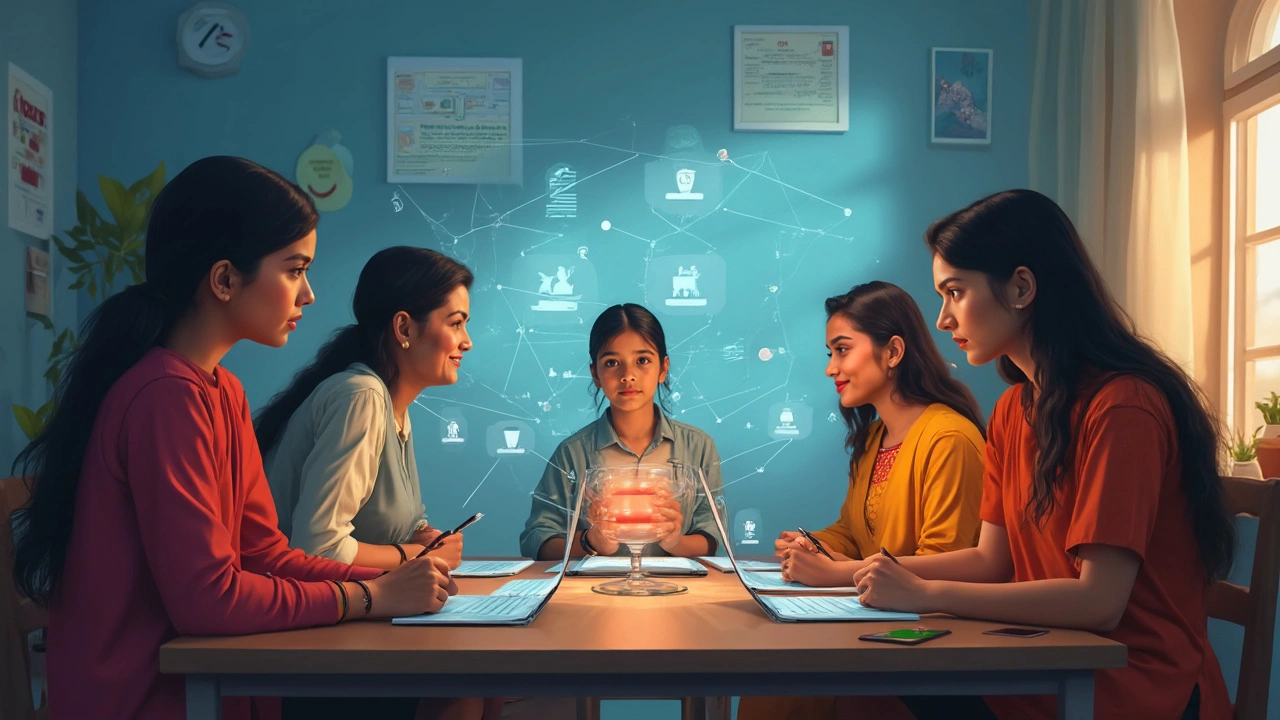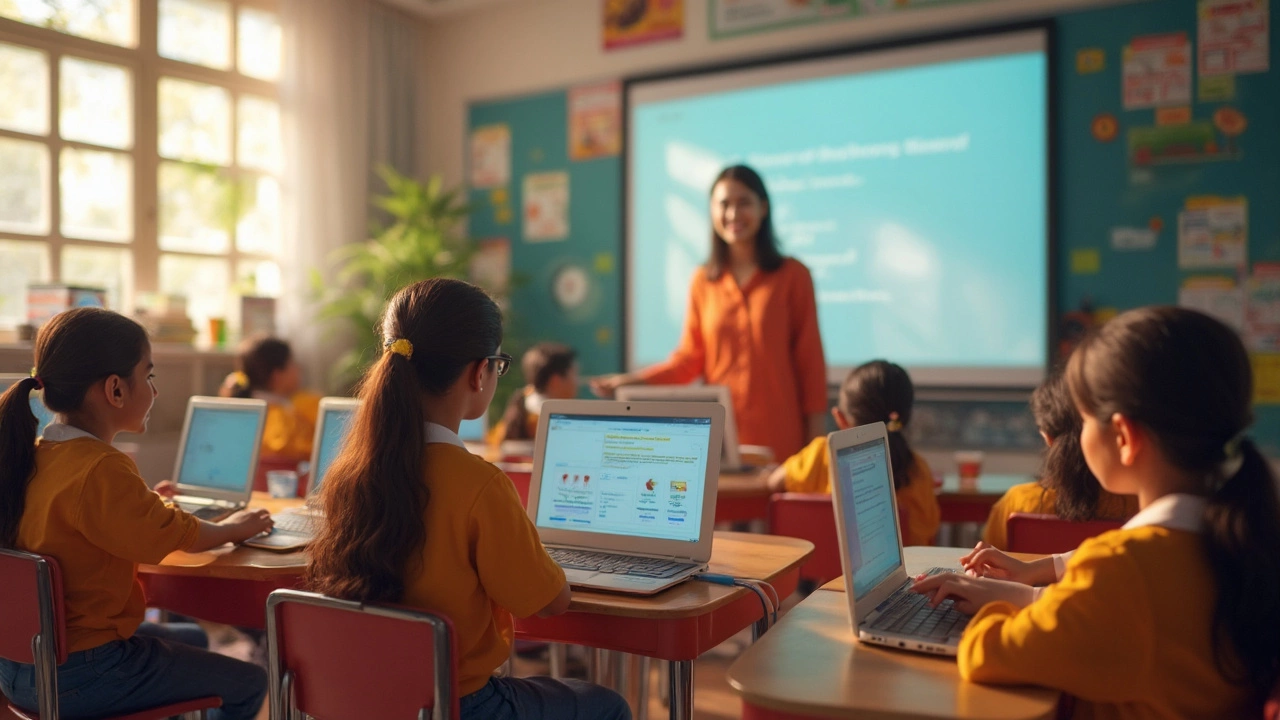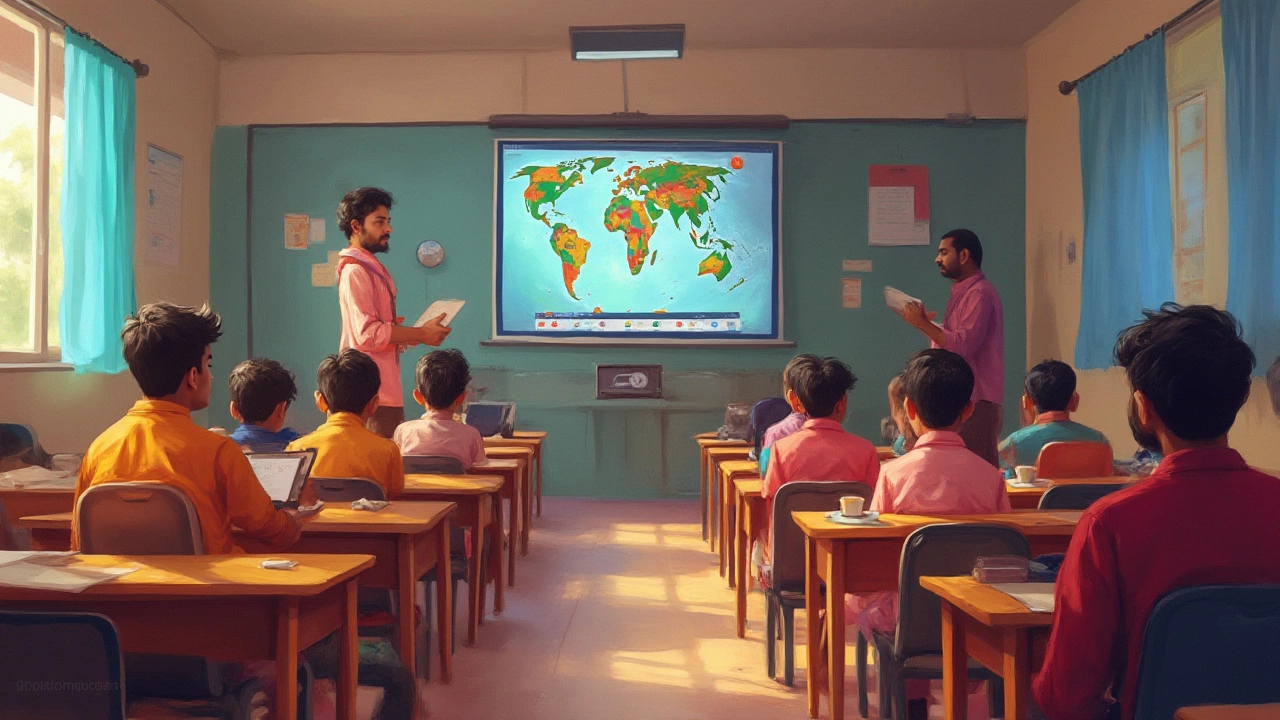Distance education isn't just one size fits all. It's like a buffet of learning options that let you study from anywhere, usually with just an internet connection. So why is this important? Because it makes education accessible, turning commuting time into learning time and bringing flexible schedules to those juggling jobs or family duties.
Ever wonder if there's more than just logging into a Zoom class? There certainly is. Distance education includes live online classes, pre-recorded lectures, and even hybrid models where you mix some in-person sessions with online learning. Each has its pros and cons, but the main thing they have in common? They're designed to fit around your life, not the other way around.
Defining Distance Education
Distance education, also known as online learning or e-learning, is all about offering educational opportunities beyond the traditional classroom setup. It leverages technology to connect students and teachers from different locations, making education more accessible to everyone who can't make it to a campus.
What's really interesting is how this isn't some new trend. It dates back to the early 18th century with correspondence courses, where lessons were delivered by mail. Fast forward to today, and you've got a vast array of digital platforms offering anything from virtual degree programs to specialized certificates.
Virtual classes are a big part of this, where students and instructors meet in realtime online. The beauty of this? No more battling traffic to get to a 9 AM lecture. Instead, your classroom's a click away. There's also asynchronous learning, where you access materials like recorded lectures and assignments on your schedule, giving you a ton of flexibility.
Here's the kicker: not all distance education is purely online. Some programs blend the two worlds with hybrid learning—mixing on-campus classes with online sessions. This combo often lets you enjoy the best of both worlds: face-to-face interaction and the convenience of learning from anywhere.
New data points out that the number of students enrolled in distance education courses in the U.S. has been on the rise, growing by a notable percentage each year. It's a testament to how folks are embracing this mode of learning as a legit way to earn degrees and skills without ever stepping foot in a traditional classroom.
Different Formats and Methods
When it comes to distance education, there's more than just one way to learn from afar. It's not just about online classes, but a whole spectrum of educational methods that can fit into your lifestyle. Let's break down the main options you might encounter when diving into this world.
First up, we have online learning, probably the most familiar to most of us. Imagine being part of a live class but through your screen, with video lectures and interaction via chats or video calls. This format can really make you feel like you're in a virtual room full of classmates.
Then there are pre-recorded courses, a great option if you have to work around a hectic schedule. You can watch videos, complete assignments, and progress at your own pace, so it's perfect for those who can't stick to set class times. Some institutions even offer a mix of online and in-person sessions, known as hybrid courses, which combine the best of both worlds.
Virtual classes stand out for their real-time interaction. Courses in this format are scheduled like traditional ones but held online. This method nurtures a sense of community which can sometimes be missing in other formats.
"The future of learning is not a one-size-fits-all solution. It thrives on flexibility and adaptability, aligning with the diverse lives of students today," says Dr. Jane Doe, an expert in digital education.
Finally, there's blended learning, which doesn't get as much buzz as it should. It involves a thoughtful integration of digital tools and face-to-face instruction. This approach can benefit those who learn best in varied environments and want the interaction of in-person classes without missing out on the advantages of tech-based aides.
No matter which format you choose, the key is to find what syncs with your life and learning style. Whether you need the flexibility of e-learning or the structured environment of virtual classes, distance education has something to fit your needs.

Benefits and Challenges
When it comes to distance education, there's a lot to love but also a few hurdles to be aware of. Let's kick off with the good stuff. One of the biggest perks is the flexibility. You can often choose when and where you want to study. Whether you're a night owl or an early bird, you can fit learning into your schedule.
Another plus? No commuting. Imagine skipping the traffic jam or a crowded bus to attend class. Plus, distance learning often costs less since there's no need for physical spaces. Tuition can be cheaper, and you won't have to worry about spending on gas or school supplies like notebooks. Simply put, it’s easier on your wallet.
But, hold on—it's not all sunshine and rainbows. Distance education requires some serious self-discipline. Without a teacher physically in front of you or classmates to keep you on track, you might find it tricky to stay motivated. It can be tempting to watch another cat video instead of that lecture.
Then there's the issue of technology. A reliable internet connection is a must-have. Slow or unreliable Wi-Fi can turn your study session into a frustrating ordeal. And let's not forget about social interaction. Studying from home can feel isolating, especially if you're used to busy campus life.
Here's a small snapshot highlighting the balance between benefits and challenges in distance education:
| Benefits | Challenges |
|---|---|
| Flexibility in schedule | Requires self-discipline |
| Cost-effective | Technology dependency |
| No commute | Lack of physical interaction |
Knowing these can help you weigh your options better. Understanding both sides prepares you to tackle challenges while maximizing the perks.
Tips for Success
Navigating the world of distance education can feel tricky at times. But don't worry! With a few smart strategies, you can crush it. First off, treat it like a regular class. Set a consistent schedule, and stick to it like it's a strict gym routine. This helps create a learning habit and keeps procrastination at bay.
Your learning space matters, too. Find a spot that's comfortable but not too comfy—like, not your bed. You want a place where your brain goes, 'Alright, it’s work time.' Plus, keep it organized so you're not wasting time looking for that one pen or notebook under a pile of clothes.
Engage with your online learning materials actively. Take notes, ask questions in forums, and participate in discussions. Staying engaged can really boost your understanding and retention. By the way, it's cool to connect with your classmates. Even if it’s virtual, forming study groups or just having a chat about the day can make the process way more enjoyable.
- Leverage Technology: Use productivity apps and tools to keep track of assignments and deadlines. Tools like Trello or Asana can be game-changers for staying organized.
- Reach Out: Don’t hesitate to ask for help. Whether it’s a prof or fellow student, reaching out can save you a lot of time and stress.
- Break It Down: Tackling smaller tasks is way less overwhelming than taking on a whole syllabus all at once. Break your studies into chunks and focus on one piece at a time.
Finally, let's talk about that self-discipline muscle. Yes, it's tough when there’s no one hovering over your shoulder. A study from 2024 showed that students in e-learning environments improved their grades by around 25% just by setting clear goals and rewarding themselves for progress. So, set some goals and don’t forget to give yourself a high-five—or maybe a cookie—when you hit them!



